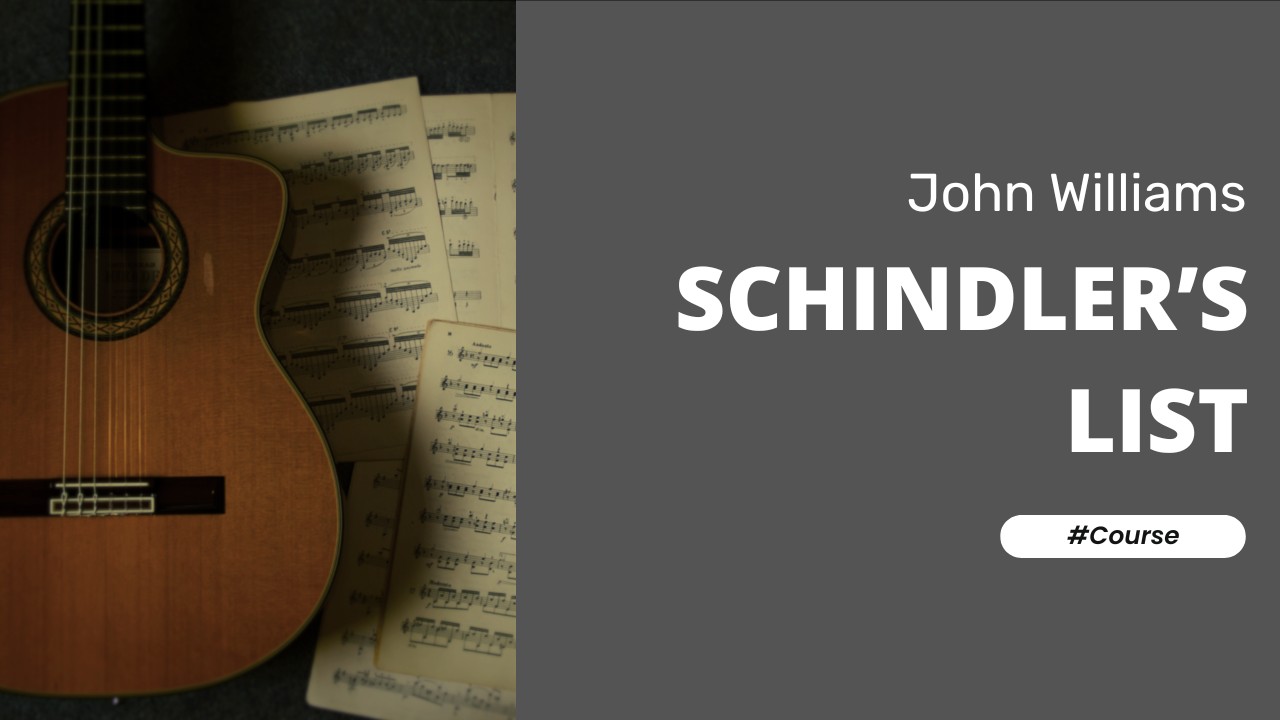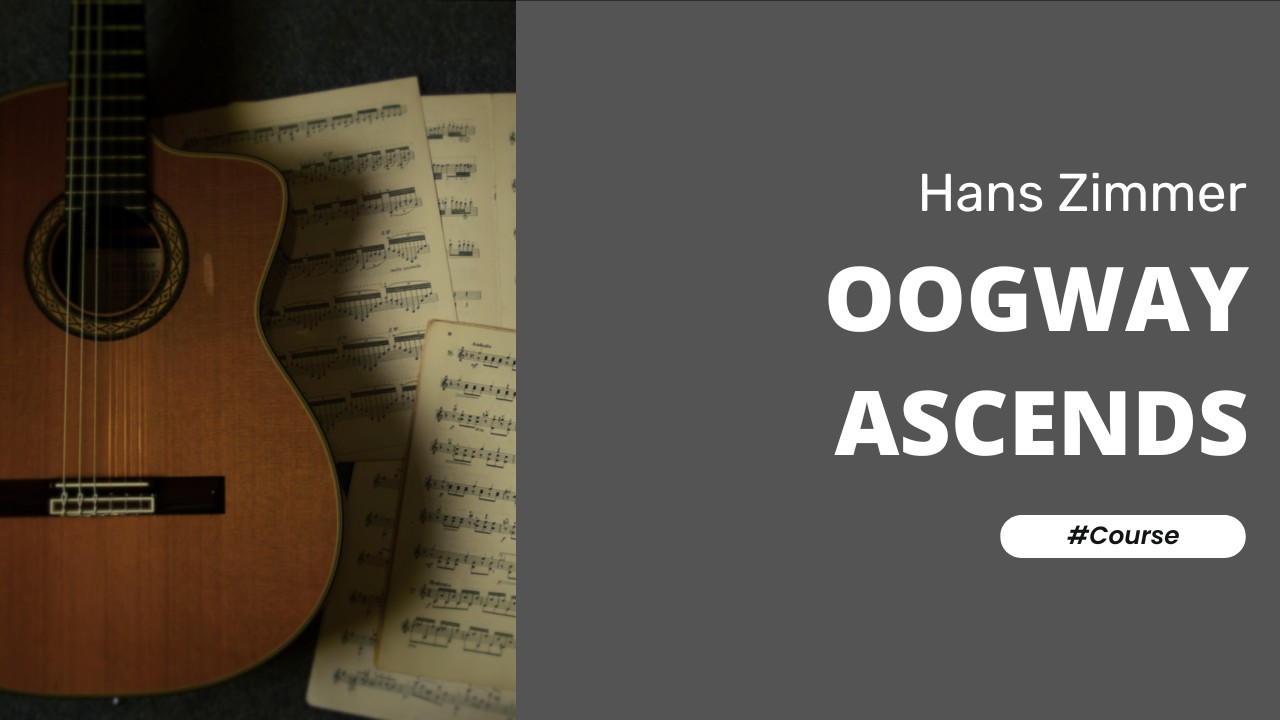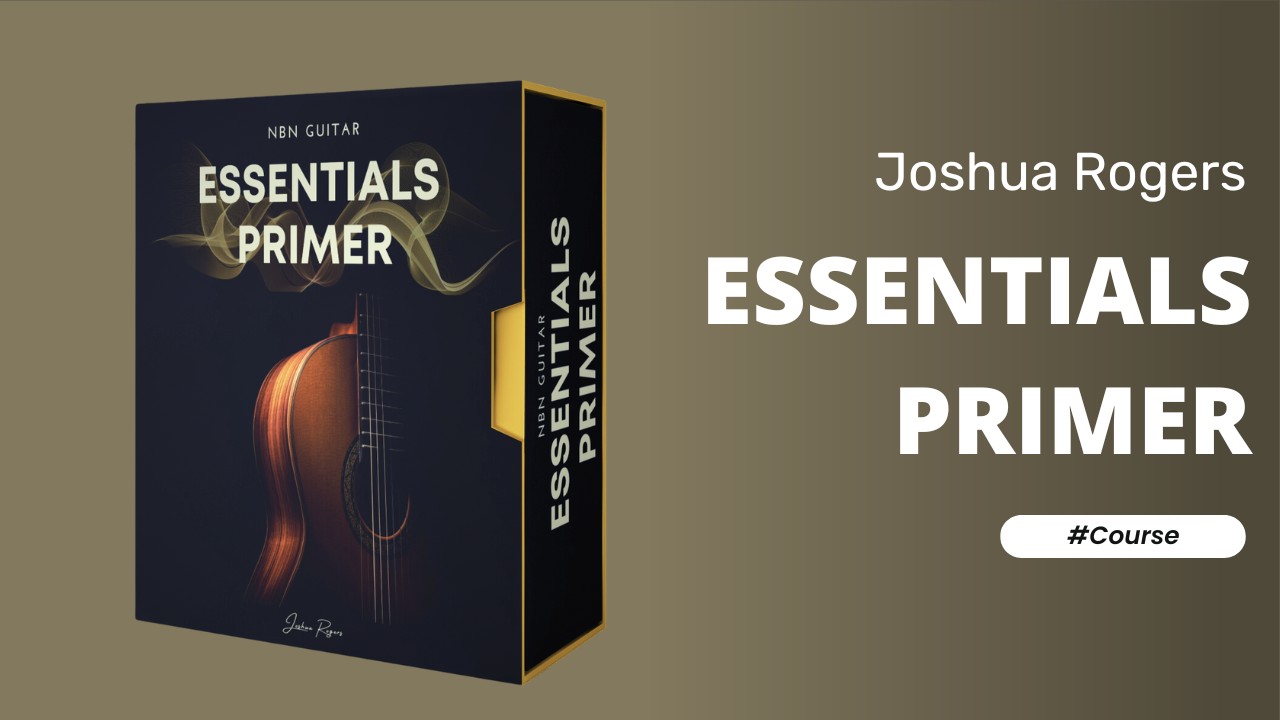Prelude No. 7, Op. 28 by Frederic Chopin
Introduction to Prelude No. 7, Op. 28 Guitar Course
This guitar lesson teaches you all of the notes and positions for one of Chopins’ most recognisable Preludes. The melody is simple yet exquisitely beautiful and the entire piece almost seem to be over before it begins. My most recent performance of this lovely little tune was in January at the 2024 Taranaki Classical Guitar Summer School where I was invited to both teach and perform.
“Prelude No. 7, Op. 28” by Frédéric Chopin is a short but expressive piece that beautifully showcases Chopin’s lyrical style and emotional depth. Originally composed for piano, this prelude has been effectively transcribed for classical guitar, allowing guitarists to explore its rich harmonic language and melodic beauty. The piece is set in the key of A major and is typically performed at a moderate tempo, around 80-90 BPM. This prelude, like many of Chopin’s works, stays in the home key throughout, creating a sense of cohesion and unity. Despite its brevity, “Prelude No. 7” captures a wide range of emotions through its flowing melody and gentle harmonies, making it a compelling piece to perform and listen to.
Because the Prelude Op. 28, No. 7 is such a short piece I have taken extra time to explain some performance ideas to help make the piece more attractive to the listener.
-
Try varying the position of the picking hand from ponticello to sul tasto
-
Use the picking thumb to create a variety of tonal colours.
Musical Style
Frédéric Chopin’s musical style is marked by its poetic expressiveness, intricate ornamentation, and innovative use of harmony. Known as the poet of the piano, Chopin’s compositions often feature flowing melodies, rich textures, and a nuanced use of rubato. His works are deeply emotional, reflecting his personal experiences and the cultural influences of his Polish heritage. Chopin’s ability to blend technical virtuosity with lyrical beauty has made his music timeless and universally beloved. His contributions to piano literature, including his nocturnes, mazurkas, and ballades, have left an indelible mark on the Romantic era and continue to inspire musicians today.
Notable Pieces
• Ballade No. 1 in G minor, Op. 23
• Étude in E major, Op. 10, No. 3 (“Tristesse”)
• Fantaisie-Impromptu in C-sharp minor, Op. posth. 66
• Polonaise in A-flat major, Op. 53 (“Heroic”)
• Prelude in D-flat major, Op. 28, No. 15 (“Raindrop”)
Let your fingers fly!
Josh
Course Instructor
Prelude No. 7, Op 28 Course
About this Course
Introduction to Prelude No. 7, Op. 28 Guitar Course
This guitar lesson teaches you all of the notes and positions for one of Chopins’ most recognisable Preludes. The melody is simple yet exquisitely beautiful and the entire piece almost seem to be over before it begins. My most recent performance of this lovely little tune was in January at the 2024 Taranaki Classical Guitar Summer School where I was invited to both teach and perform.
“Prelude No. 7, Op. 28” by Frédéric Chopin is a short but expressive piece that beautifully showcases Chopin’s lyrical style and emotional depth. Originally composed for piano, this prelude has been effectively transcribed for classical guitar, allowing guitarists to explore its rich harmonic language and melodic beauty. The piece is set in the key of A major and is typically performed at a moderate tempo, around 80-90 BPM. This prelude, like many of Chopin’s works, stays in the home key throughout, creating a sense of cohesion and unity. Despite its brevity, “Prelude No. 7” captures a wide range of emotions through its flowing melody and gentle harmonies, making it a compelling piece to perform and listen to.
Because the Prelude Op. 28, No. 7 is such a short piece I have taken extra time to explain some performance ideas to help make the piece more attractive to the listener.
-
Try varying the position of the picking hand from ponticello to sul tasto
-
Use the picking thumb to create a variety of tonal colours.
Musical Style
Frédéric Chopin’s musical style is marked by its poetic expressiveness, intricate ornamentation, and innovative use of harmony. Known as the poet of the piano, Chopin’s compositions often feature flowing melodies, rich textures, and a nuanced use of rubato. His works are deeply emotional, reflecting his personal experiences and the cultural influences of his Polish heritage. Chopin’s ability to blend technical virtuosity with lyrical beauty has made his music timeless and universally beloved. His contributions to piano literature, including his nocturnes, mazurkas, and ballades, have left an indelible mark on the Romantic era and continue to inspire musicians today.
Notable Pieces
• Ballade No. 1 in G minor, Op. 23
• Étude in E major, Op. 10, No. 3 (“Tristesse”)
• Fantaisie-Impromptu in C-sharp minor, Op. posth. 66
• Polonaise in A-flat major, Op. 53 (“Heroic”)
• Prelude in D-flat major, Op. 28, No. 15 (“Raindrop”)
Let your fingers fly!
Josh
Course Instructor
Prelude No. 7, Op 28 Course




